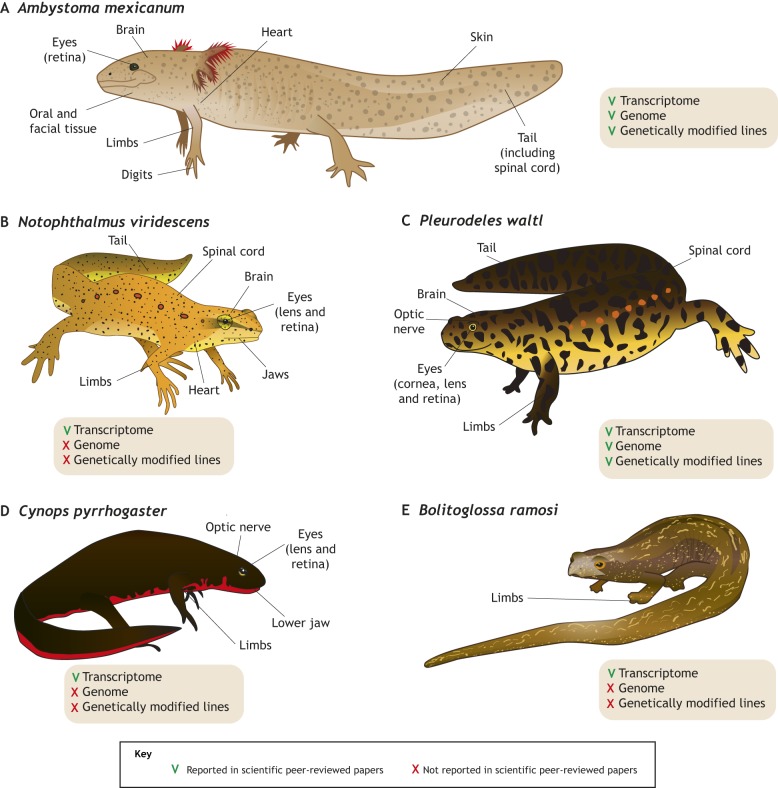Fig. 2.
Salamander species in regeneration research. Both established and emerging species are shown, highlighting regenerative organs/tissues and major resources available for each species. (A) The Mexican axolotl, Ambystoma mexicanum, is a paedomorphic salamander that retains fully aquatic features throughout its entire life cycle. The axolotl is easy to breed under laboratory conditions, and is the most commonly used salamander model organism in regeneration research, mostly owing to the availability of several genetically modified lines (Tanaka, 2016). (B) The Eastern red spotted newt, Notophthalmus viridescens, has contributed significantly to our understanding of multiple regeneration processes with reference transcriptomes available. Genetically modified lines are difficult to establish due to its long generation time and complex life cycle (Abdullayev et al., 2013; Looso et al., 2013). (C) The Iberian ribbed newt, Pleurodeles waltl, is a highly regenerative, emerging model species. It can be maintained in a fully aquatic habitat throughout its entire life cycle and has a similar generation time to the axolotl. Transcriptomes and genome assemblies are now available, as well as genetically modified lines (Elewa et al., 2017; Hayashi and Takeuchi, 2015; Hayashi et al., 2013; Joven et al., 2015, 2018). (D) The Japanese fire-bellied newt, Cynops pyrrhogaster, has been used to study eye, limb, jaw and brain regeneration. A transcriptome focusing on lens and neural retina regeneration has been assembled (Casco-Robles et al., 2016; Kurosaka et al., 2008; Nakamura et al., 2014). (E) The plethodontid Bolitoglossa ramosi is a fully terrestrial, direct developer (no larval stage) for which a limb regeneration transcriptome has been reported (Arenas Gomez et al., 2017, 2018).

